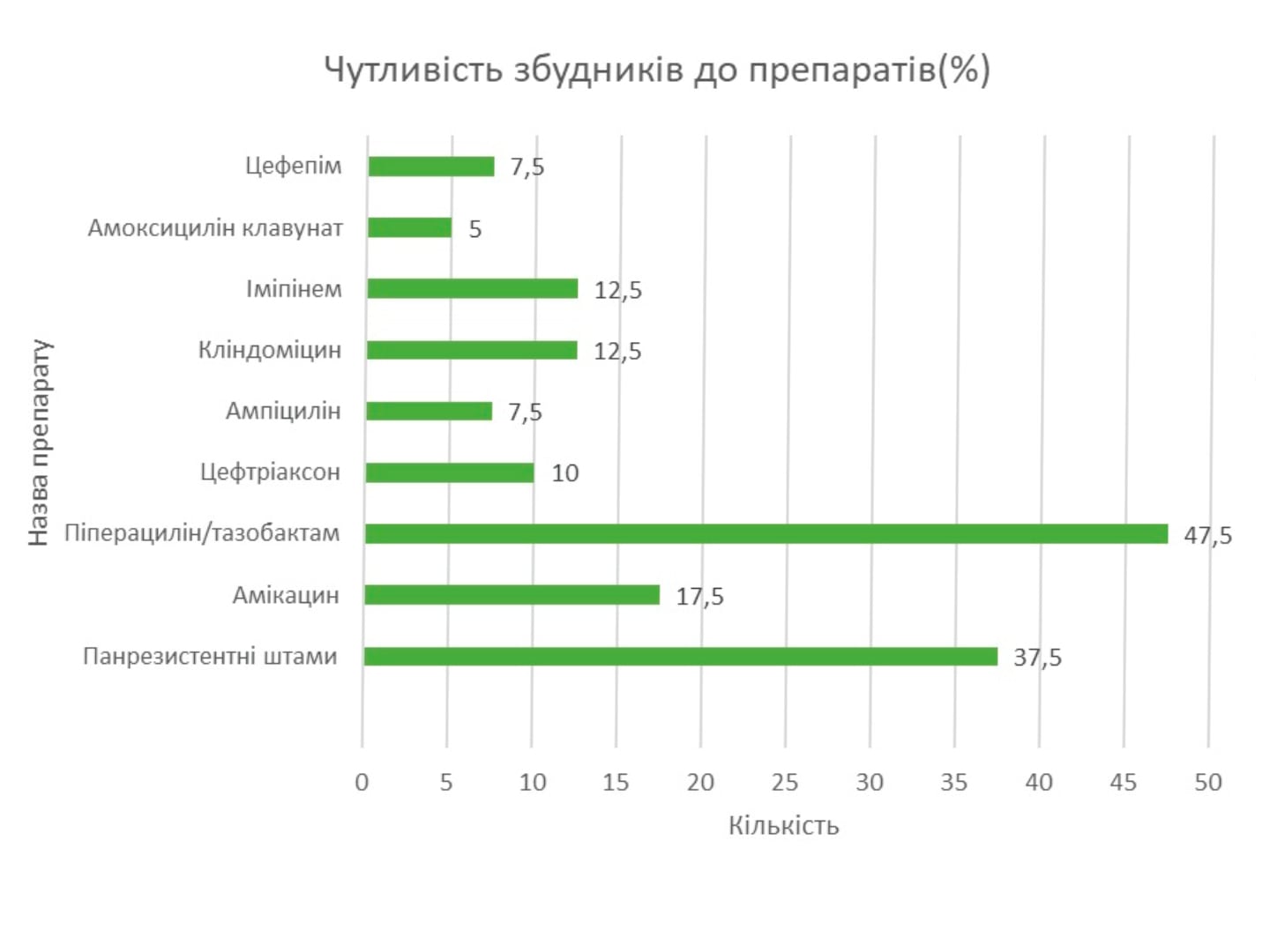The place of ropivacaine in modern regional anesthesia
Obstetrician-gynecologist, Orthopaedic Trauma, Surgeon, The anesthesiologist and specialist on medical emergency conditions, Urologist

Resume. The article considers the pharmacology of some local anesthetics and the possibility of their use in various fields of surgery. The results of studies on the efficacy and safety of bupivacaine and ropivacaine were analyzed. Ropivacaine has been shown to be a modern drug with minimal side effects.
Key words: local anesthetics, regional anesthesia, bupivacaine, ropivacaine.
Authors:
I.I. Lisnyy, Kh.A. Zakalska, National Cancer Institute, Kyiv
Literature:
- Aberg, (1972). Toxicological and local anesthetic effects of optically active isomers of two local anesthetic compounds. Acta Pharmacologica et Toxicologica, 31(4), 273–286.
- Akerman, B., Hellberg, I. B., & Trossvik, C. (1988). Primary evaluation of the local anaesthetic properties of the amino amide agent ropivacaine (LEA 103). Acta Anaesthesiologica Scandinavica , 32 ( 7 ) , 5 7 1 – 5 7 8 . d o i : 1111/j.1399-6576.1988.tb02788.x.
- A l b r i g h t , G . A . ( 1 9 7 9 ) . C a r d i a c a r r e s t f o l l o w i n g r e g i o n a l anesthesia with etidocaine or bupivacaine. Anesthesiology, 51(4), 285–287. doi:10.1097/00000542-197910000-00001.
- Auroy, Y., Narchi, P., Messiah, A., Litt, L., Rouvier, B., & Samii, K. (1997). Serious complications related to regional anesthesia: results of prospective survey in Anesthesiology, 87(3), 479–486. doi: 10.1097/00000542-199709000-00005.
- Badner, N. H., Reid, D., Sullivan, P., Ganapathy, S., Crosby, E. T., McKenna , & Lui, A. (1996). Continuous epidural infusion of ropivacaine for the prevention of postoperative pain after major orthopaedic surgery: a dose-finding study. Canadian Journal of Anaesthesia, 43(1), 17–22. doi: 10.1007/BF03015952.
- Beilin, Y., Galea, , Zahn, J., & Bodian, C. A. (1999). Epidural ropivacaine for the initiation of labor epidural analgesia: a dose finding study. Anesthesia & Analgesia, 88(6), 1340–1345. doi: 10.1097/00000539-199906000-00027.
- Benhamou, , Hamza, J., Eledjam, J. J., Dailland P., Palot, M., Seebacher, J., … Heeroma, K. (1997). Continuous extradural infusion of ropivacaine 2mg ml–1 for pain relief during labour. British Journal of Anaesthesia, 78(6), 748–750. doi: 10.1093/bja/78.6.748.
- Bertini, L., Tagariello, V., Mancini, S., Ciaschi A., Posteraro C. , Benedetto P., & Martini, O. (1999). 0.75% and 0.5% ropivacaine for axillary brachial plexus block: a clinical comparison with 0.5% bupivacaine. Regional Anesthesia & Pain Medicine, 24(6), 514–518. doi: 10.1016/s1098-7339(99)90041-x.
- Casati , & Putzu M. (2005). Bupivacaine, levobupivacaine and ropivacaine: are they clinically different? Best Practice & Research Clinical Anaesthesiology, 19(2), 247–268. doi:10.1016/j.bpa.2004.12.003.
- Cascio, M. G., Gaiser, R. R., Camann, W. R., Venkateswaran, P., Hawkens, J., & McCarthy D. (1998). Comparative evaluation of four different infusion rates of ropivacaine (2 mg/ml) for epidural labor Regional Anesthesia & Pain Medicine, 23(6), 548–553. doi: 10.1016/s1098-7339(98)90079-7.
- Cederholm, I., Evers, H., & Lofstrom, J. B. (1991). Effect of intradermal injection of saline or a local anaesthetic agent on skin blood flow: a methodological study in man. Acta Anaesthesiologica Scandinavica, 35(3), 208–215. doi: 1111/j.1399-6576.1991.tb03275.x.
- Cederholm, I., Evers, H., & Lofstrom, J. B. (1992). Skin blood flow after intradermal injection of ropivacaine in various concentrations with and without epinephrine evaluated by laser Doppler flowmetry. Regional Anesthesia, 17(6), 322–328.
- Cederholm, , Akerman, B., & Evers, H. (1994). Local analgesic and vascular effects of intradermal ropivacaine and bupivacaine in various concentrations with and without addition of adrenaline in man. Acta Anaesthesiologica Scandinavica, 38(4), 322–327. doi: 10.1111/j.1399-6576.1994.tb03901.x.
- Clarkson, W., & Hondeghem, L. M. (1985). Mechanism for bupivacaine depression of cardiac conduction: fast block of sodium channels during the action potential with slow recovery from block during diastole. Anesthesiology, 62(4), 396–405.
- Ekström, , & Gunnarsson, U. B. (1996). Ropivacaine, a new amide-type local anesthetic agent, is metabolized by cytochromes P450 1A and 3A in human liver microsomes. Drug Metabolism & Disposition, 24(9), 955–961.
- F a c c e n d a , K . A . , & F i n u c a n e , B . T . ( 2 0 0 1 ) . C o m p l i c a t i o n s of regional anaesthesia: incidence and prevention. Drug Safety, 24(6), 413–442. doi:10.2165/00002018-200124060-00002.
- Fanelli, , Casati, A., Beccaria, P., Aldegheri, G., Berti, M., Tarantino, F., & Torri, G. (1998). A double-blind comparison of ropivacaine, bupivacaine, and mepivacaine during sciatic and femoral nerve blockade. Anesthesia & Analgesia, 87(3), 597–600. doi: 10.1097/00000539-199809000-00019.
- Graf, B. , Abraham, I., Eberbach, N., Kunst, G., Stowe, D., & Martin, E.(2002). Differences in cardiotoxicity of bupivacaine and ropivacaine are the result of physicochemical and stereoselective properties. Anesthesiology, 96(6), 1427–1434. doi: 10.1097/00000542-200206000-00023.
- Groban, , Deal, D. D., Vernon, J. C., James, R. L., & Butterworth, J. (2001). Cardiac resuscitation after incremental overdosage with lidocaine, bupivacaine, levobupivacaine, and ropivacaine in anesthetized dogs. Anesthesia & Analgesia, 92(1), 37–43. doi: 10.1097/00000539-200101000-00008.
- Guinard, , Carpenter, R., Owens, B., & Nadir, B. (1991). Comparison between ropivacaine and bupivacaine after subcutaneous injection in pigs: cutaneous blood flow and surgical bleeding. Regional Anesthesia, 16(5), 268–271.
- Hickey, R., Blanchard, J., Hoffman, J., Sjovall, J., & Ramamurthy, (1990). Plasma concentrations of ropivacaine given with or without epinephrine for brachial plexus block. Canadian Journal of Anaesthesia, 37(8), 878–882. doi: 10.1007/BF03006624.
- Horlocker, T. T. (1998). Peripheral nerve blocks: regional anesthesia for the new millennium. Regional Anesthesia & Pain Medicine, 23(3), 237–240. doi:10.1016/s1098-7339(98)90047-5.
- Huang, , Pryor, M., Mather, L., & Veering, B. (1998). Cardiovascular and central nervous system effects of intravenous levobupivacaine and bupivacaine in sheep. Anesthesia & Analgesia, 86(4), 797–804. doi: 10.1097/00000539-199804000-00023.
- Jacob, B., Zippelius, T., Kloss, N., Benad, K., Schwerdt, C., Hoff, P., … Rohner, (2019). Local anesthetics’ toxicity toward human cultured chondrocytes: a comparative study between lidocaine, bupivacaine, and ropivacaine. Cartilage, 10(3), 364–369. doi: 10.1177/1947603518758436.
- Johansson, , Glise, H., Hallerback, B., Dalman, P., & Kristoffersson, A. (1994). Preoperative local infiltration with ropivacaine for postoperative pain relief after cholecystectomy. Anesthesia & Analgesia, 78(2), 210–214. doi: 10.1213/00000539-199402000-00003.
- J o s h i , G . P . , & W h i t e , P . F . ( 2 0 0 2 ) . M a n a g e m e n t o f a c u t e a n d postoperative pain. Current Opinion in Anaesthesiology, 14(4), 417–421. doi: 1097/00001503-200108000-00007.
- Kopacz, J., Carpenter, R. L., & Mackey, D. C. (1989). Effect of ropivacaine on cutaneous capillary blood flow in pigs. Anesthesiology, 71(1), 69–74. doi: 10.1097/00000542-198907000-00013.
- Lee, , Fagan, D., Lamont, M., Tucker, G., Halldin, M., & Scott, D. (1989). Disposition kinetics of ropivacaine in humans. Anesthesia & Analgesia, 69(3), 736–738.
- Liang М., Chen , Zhu W., & Zhou D. (2020). Efficacy and safety of different doses of ropivacaine for laparoscopy-assisted infiltration analgesia in patients undergoing laparoscopic cholecystectomy. A prospective randomized control trial. Medicine (Baltimore), 99(46), 225–240. doi: 10.1097/MD.0000000000022540.
- Litz, , Frank, M., Wagner, B., Koch, T., & Albrecht, D. (1999). Anaesthesiology & Intensive Medicine, 40, 423.
- McClure, H. (1996). Ropivacaine. British Journal of Anaesthesia, 76(2), 300–307. doi: 10.1093/bja/76.2.300.
- McGlade, D. P., Kalpokas, M. V., Mooney, P. H., Buckland, M. R., Vallipuram, S. K., Hendrata, M. V., & Torda, T.A. (1997). Comparison of 5% ropivacaine and 0.5% bupivacaine in lumbar epidural anaesthesia for lower limb orthopaedic surgery. Anaesthesia and Intensive Care, 25(3), 262–266. doi: 10.1177/0310057X9702500310.
- McGlade, P., Kalpokas, M. V., Mooney, P. H., Chamley, D., Mark, A. H., & Torda, T. A. (1998). A comparison of 0.5% ropivacaine and 0.5% bupivacaine for axillary brachial plexus anaesthesia. Anaesthesia and Intensive Care, 26(5), 515–520. doi: 10.1177/0310057X9802600507.
- Muldoon, , Milligan, K., Quinn, P., Connolly, D. C., & Nilsson K. (1998). Comparison between extradural infusion of ropivacaine or bupivacaine for the prevention of postoperative pain after total knee arthroplasty. British Journal of Anaesthesia, 80(5), 680–681. doi: 10.1093/bja/80.5.680.
- Nakamura, K., Toda, H., Kakuyama, M., Nishiwada, M., Yamamoto, M., Hatano, , & Mori, K. (1993). Direct vascular effect of ropivacaine in femoral artery and vein of the dog. Acta Anaesthesiologica Scandinavica, 37(3), 269–273. doi: 10.1111/j.1399-6576.1993.tb03714.x.
- Nancarrow, C., Rutten, A., Runciman, W., Mather, L. E., Carapetis, R. J., McLean, F., & Hipkins, S. F. (1989). Myocardial and cerebral drug concentrations and the mechanisms of death after fatal intravenous doses of lidocaine, bupivacaine, and ropivacaine in the sheep. Anesthesia & Analgesia, 69(3), 276–283.
- Oda, , Furuichi, K., Tanaka, K., Hiroi, T., Imaoka, S., Asada, A., … Funae, Y. (1995). Metabolism new local anesthetic, ropivacaine, by human hepatic cytochrome P450. Anaesthesiology, 82(1), 214–220. doi: 10.1097/00000542-199501000-00026.
- Raeder, J. C., Drosdahl, S., Klaastad, O., Kvalsvik, O., Isaksen, , Stromskag, K. E., … Selander, D. (1999). Axillary brachial plexus block with ropivacaine 7.5 mg/ml: a comparative study with bupivacaine 5 mg/ml. Acta Anaesthesiologica Scandinavica, 43(8), 794–798. doi: 10.1034/j.1399-6576.1999.430802.x.
- Rao, , Zhou, H., Pan, X., Chen, J., Wang, Y., Wang, Z., & Ding, Z. (2017). Ropivacaine wound infiltration: a fast-track approach in patients undergoing thoracotomy surgery. Journal of Surgical Research, 220, 379–384. doi: 10.1016/j.jss.2017.05.082.
- Reiz, , & Nath, S. (1986). Cardiotoxicity of local anaesthetic agents. British Journal of Anaesthesia, 58(7), 736–746. doi: 10.1093/bja/58.7.736.
- Ruetsch, Y., Fattinger, K., & Borgeat, A. (1999). Ropivacaine-induced convulsions and severe cardiac dysrhythmia after sciatic Anesthesiology, 90(6), 1784–1786. doi: 10.1097/00000542-199906000-00040.
- Sia, A. T., & Chong, J. L. (1999). Epidural 2% ropivacaine for labour analgesia: parturient-controlled or continuous infusion? Anaesthesia and Intensive Care, 27(2), 154–158. doi: 10.1177/0310057X9902700204.
- Sia, A. T., Ruban, P., Chong, J. L., & Wong, K. (1999). Motor blockade is reduced with ropivacaine 125% for parturient-controlled epidural analgesia during labour. Canadian Journal of Anaesthesia, 46(11), 1019–1023. doi: 10.1007/BF03013195.
- Scott, D., Lee, A., Fagan, D., Bowler, G. , Bloomfield, P., & Lundh, R. (1989). Acute toxicity of ropivacaine compared with that of bupivacaine. Anesthesia & Analgesia, 69(5), 563–569.
- Vanhoutte, F., Vereecke, J., Verbeke, N., & Carmeliet, E. (1991). Stereoselective effects of the enantiomers of bupivacaine on the electrophysiological properties of the guineapig papillary muscle. British Journal of Pharmacology, 103(1), 1275–1281. doi:10.1111/j.1476-5381.1991.tb12336.x.
- Vladimirov, M., Nau, C., Mok, W., & Strichartz, G. (2000). Potency of bupivacaine stereoisomers tested in vitro and in vivo: biochemical, elec- trophysiological, and neurobehavioral Anesthesiology, 93(3), 744–755. doi: 10.1097/00000542-200009000-00024.
- Voulgaropoulos, D., Johnson, , & Covino, B. (1990). Local Anesthetic Toxicity. Seminars in Anesthesia, 9, 8–15.
- Whiteside, B., & Wildsmith, J. A. (2001). Developments in local anaesthetic drugs. British Journal of Anaesthesia, 87(1), 27–35. doi.org/10.1093/bja/87.1.27.
- Wildsmith, A. (2000). Relative potencies of ropivacaine and bupivacaine. Anesthesiology, 92(1), 283–284. doi: 10.1097/00000542-200001000-00050.
- Writer, W. D., Stienstra, R., Eddleston, J. M., Gatt, S. P., Griffin, R., Gutsche, B., … Selander, D. (1998). Neonatal outcome and mode of delivery after epidural analgesia for labour with ropivacaine and bupivacaine: a prospective meta- analysis. British Journal of Anaesthesia, 81(5), 713–717. doi: 10.1093/bja/81.5.713.
- Zink, W., & Graf, B. M. (2004). Benefit-risk assessment of ropivacaine in the мanagement of рostoperative рain. Drug Safety, 27(14), 1093–1114. doi:10.2165/00002018-200427140-00003.
- Zink, , Seif, C., Bohl, J., Hacke, N., Braun, P., Sinner, B., … Graf, B. (2003). The acute myotoxic effects of bupivacaine and ropivacaine after continuous peripheral nerve blockades. Anesthesia & Analgesia, 97(4), 1173–1179. doi:10.1213/01.ANE.0000080610.14265.C8.



